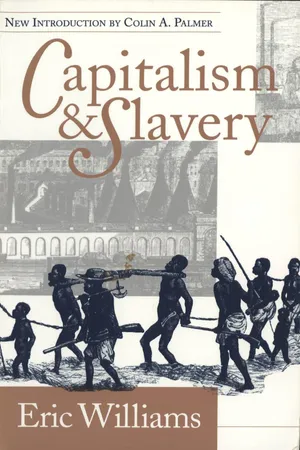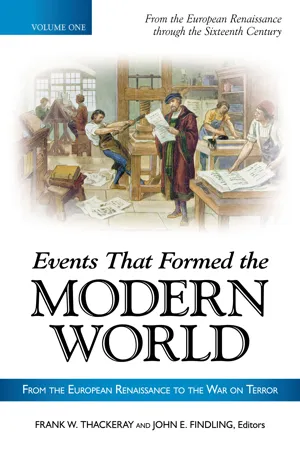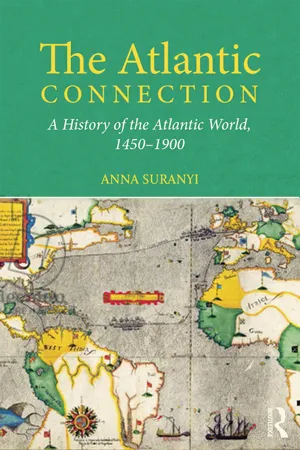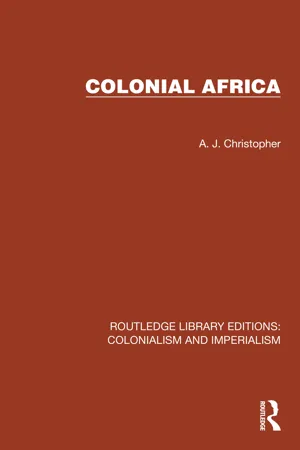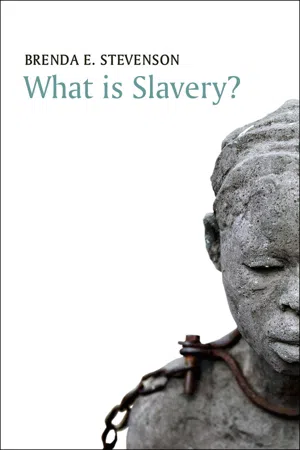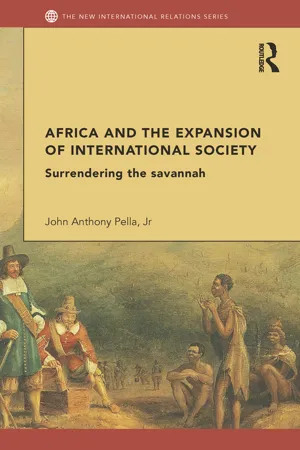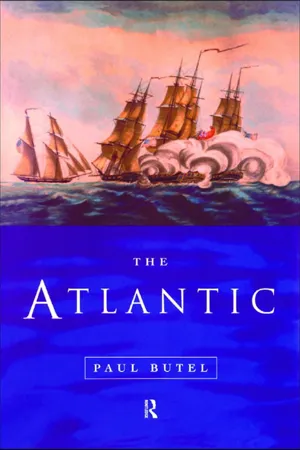History
Triangular Trade
Triangular Trade was a historical trade route that connected Europe, Africa, and the Americas. It involved the exchange of goods, slaves, and raw materials. European ships transported manufactured goods to Africa, where they were traded for slaves who were then transported to the Americas. In the Americas, the slaves were traded for raw materials such as sugar, tobacco, and cotton, which were then sent back to Europe.
Written by Perlego with AI-assistance
Related key terms
Related key terms
1 of 4
Related key terms
1 of 3
10 Key excerpts on "Triangular Trade"
- eBook - ePub
- Eric Williams(Author)
- 2014(Publication Date)
- The University of North Carolina Press(Publisher)
BRITISH COMMERCE AND THE Triangular TradeA. THE Triangular Trade
According to Adam Smith, the discovery of America and the Cape route to India are “the two greatest and most important events recorded in the history of mankind.” The importance of the discovery of America lay not in the precious metals it provided but in the new and inexhaustible market it afforded for European commodities. One of its principal effects was to “raise the mercantile system to a degree of splendour and glory which it could never otherwise have attained to.”1 It gave rise to an enormous increase in world trade. The seventeenth and eighteenth centuries were the centuries of trade, as the nineteenth century was the century of production. For Britain that trade was primarily the Triangular Trade. In 1718 William Wood said that the slave trade was “the spring and parent whence the others flow.”2 A few years later Postlethwayt described the slave trade as “the first principle and foundation of all the rest, the mainspring of the machine which sets every wheel in motion.”3In this Triangular Trade England—France and Colonial America equally—supplied the exports and the ships; Africa the human merchandise; the plantations the colonial raw materials. The slave ship sailed from the home country with a cargo of manufactured goods. These were exchanged at a profit on the coast of Africa for Negroes, who were traded on the plantations, at another profit, in exchange for a cargo of colonial produce to be taken back to the home country. As the volume of trade increased, the Triangular Trade was supplemented, but never supplanted, by a direct trade between home country and the West Indies, exchanging home manufactures directly for colonial produce.The Triangular Trade thereby gave a triple stimulus to British industry. The Negroes were purchased with British manufactures; transported to the plantations, they produced sugar, cotton, indigo, molasses and other tropical products, the processing of which created new industries in England; while the maintenance of the Negroes and their owners on the plantations provided another market for British industry, New England agriculture and the Newfoundland fisheries. By 1750 there was hardly a trading or a manufacturing town in England which was not in some way connected with the triangular or direct colonial trade.4 - eBook - ePub
Events That Formed the Modern World
From the European Renaissance through the War on Terror [5 volumes]
- Frank W. Thackeray, John E. Findling, Frank W. Thackeray, John E. Findling, Frank W. Thackeray, John E. Findling(Authors)
- 2012(Publication Date)
- ABC-CLIO(Publisher)
The slave trade was an integral part of what became known as the “Triangular Trade,” a complex and sophisticated exchange of goods that involved Europe, Africa, and the New World. While there were many variations on a single theme, the most common form of Triangular Trade featured ships laden with European goods such as cloth, spirits, iron, brass, guns, and gunpowder landing at African ports. These European products would be exchanged for slaves. The slaves would then be transported to the New World, usually Brazil, the Caribbean islands, Latin America, or what would become the southern United States. There the human cargo would be exchanged for plantation products, usually sugar or sugar products such as molasses, that would be sent back to Europe for sale.The leg of the Triangular Trade that brought slaves from Africa to the New World was called the middle passage, and it was brutal in the extreme. To maximize profits, slavers crammed as many bodies as they could into the holds of their boats. Africans were manacled and arranged head to toe with barely enough overhead room to sit upright in their place. They wallowed in their own filth among rats and vermin except when permitted on deck, where the crew exercised them under harsh conditions. Disease was rampant, and to save money, the slavers cut rations to the bone. The average middle passage lasted from 4 to 10 weeks. Although many Africans died en route, the significant profits that the slavers made provided economic justification for the ill treatment of the slaves.Not surprisingly, verifiable figures about the slave trade are difficult to find. Nevertheless, most experts conclude that approximately 10 to 11 million Africans were brought to the New World. Of that number, about 40 percent ended up in Brazil and another 40 percent in the Caribbean. The remaining 20 percent ended up in British North America and Spanish America. Frequently the slave population dwarfed the European one. For example, at the time of the French Revolution, the population of Saint Domingue (Haiti) consisted of 500,000 slaves and only 35,000 whites. - eBook - ePub
The Atlantic Connection
A History of the Atlantic World, 1450-1900
- Anna Suranyi(Author)
- 2015(Publication Date)
- Routledge(Publisher)
One of the first major consequences of Atlantic trade was the influx of silver from Spanish silver mines, which created a huge increase in the availability of monetary metals. This incurred significant consequences to the European economy as a whole, in some cases augmenting changes that had already begun to occur in the pre-Columbian period. Money rather than barter increasingly became the basis of exchange in Europe; the real value of agricultural rents, which were not adjusted for inflation, decreased, thus reducing the incomes and influence of the nobility while boosting the peasantry. Meanwhile, middling-level merchant capitalists and entrepreneurs prospered through Atlantic commerce, leading to a growing and increasingly wealthy middle class with interests that often clashed with the ideals of aristocratic society. The new availability of money-based taxes led to an increase in state incomes and the rise of the centralized state. Urban areas grew, while commerce, investment, banking, and lending flourished, enabling the development of more complex global markets and supply chains.Well-established trade routes, often termed the triangle trade, developed in the Atlantic. In the most basic form of this trade, manufactured products from Europe, especially guns and textiles, were exchanged for slaves in Africa, who were then sold in the Americas, from whence slave-produced plantation goods such as sugar, rum, tobacco, rice, and cotton traveled to Europe. In addition, Europeans produced manufactured goods such as metal wares, trinkets, and cloth for both the colonists and Africans; the colonists traded in raw materials such as furs and fish and sold liquor to both Europeans and Africans; and Africans sold cloth to European merchants. Rather than encompassing the whole Atlantic with their voyages, individual merchants and their ships typically plied one or two legs of the triangle.Dominance in Atlantic trade was initially the preserve of the Spanish. As the enormous potential for wealth became clear, control over Atlantic trade became a source of contention among European nations. It was successively taken over by the Portuguese, the Dutch, the French, and then the British from the late eighteenth century, in the end financing Britain’s rise to the dominant world power of the nineteenth century. Atlantic trade fundamentally altered global economic systems, and the relationships of world societies as international trade routes shifted to the Atlantic from the Mediterranean and the Indian Ocean. In addition to national focuses of Atlantic trade, intercontinental networks developed between groups of immigrants and their family members and associates on the eastern side of the ocean, including religious dissenters, refugees, and minority communities. These connections often provided the basis for commercial firms that developed great wealth and influence. Atlantic port towns such as Boston, Massachusetts, provided nodes for the transmission of vast of amounts of wealth. By the end of the eighteenth century, Europe had become the center of a worldwide system of wealth, military power, and technological innovation. In Africa, on the other hand, the slave trade led to depopulation, political instability, and dependency. Thus, from the beginning, European growth was inextricably tied to African underdevelopment. - eBook - ePub
- A. J. Christopher(Author)
- 2023(Publication Date)
- Routledge(Publisher)
3 TRADERS, TRANSPORTERS AND MISSIONARIESExpansion of trade between Africa and the remainder of the world took place simultaneously with the establishment of colonial rule. The two were viewed as inseparable by contemporaries and indeed governments on occasion entrusted the conquest and administration of extensive tracts of the continent to commercial ventures. Trade was a two-way movement with African primary products exchanged, however disadvantageously, for largely European industrial products. The scale varied from the major wholesale and shipping companies to the individual trader at his store. Linking them was a group of transporters who built and maintained major systems of roads, railways and shipping lines to facilitate this trade. The transport lines were laid down to promote the Europe-Africa connection with little regard for intra-Africa links, once the colonial boundaries had been drawn. A third group, the missionaries, need to be considered here as the links between Christianity and civilisation on the one hand and trade and industry on the other, were regarded by nineteenth-century Europeans as indissoluble. The missionaries effectively fostered a demand for industrial products and attempted to transform African societies into the image of industrial Europe.The Traders
Trading activity was a significant element in the European penetration of Africa, both prior to and after the establishment of colonial rule. Indeed, the earliest contacts between Africans and Europeans were usually through trade. The course of the slave trade has already been traced, but it was through what contemporaries described as ‘legitimate trade’ that exchange increasingly took place. Legitimate trade broadly involved the import of European manufactured goods into Africa and the export of raw materials, amounting to an expansion of dealings initiated by the Portuguese. Although much of the pre-1800 trade was controlled by chartered companies and state monopolies, private individuals and firms often acted as interlopers and were increasingly tolerated. This became the general trend as the slave trade was abolished and the chartered companies foundered financially. Free trade, which expanded in the eighteenth and nineteenth centuries, resulted in increasing numbers of Europeans remaining in Africa and greater competition with the indigenous trading system. However, it was not until the conquest of disease that the numbers became appreciable and that traders ceased to be confined to the coastal stations. A late resurgence of the chartered companies was associated with the partition of the continent, which ran counter to these developments, but reflects more the desire of governments to expand their colonial empires without having to pay for it than a renewed profitability of such companies. The development of the international economy in the second half of the nineteenth century was such that even apparently shaky enterprises could attract metropolitan capital (Latham, 1978 ). However, African enterprises represented only a small part of the total overseas capital flow (Frankel, 1938 ; Suret-Canale, 1971 - eBook - ePub
Debating African Issues
Conversations Under the Palaver Tree
- William G. Moseley, Kefa M. Otiso, William G. Moseley, Kefa M. Otiso(Authors)
- 2022(Publication Date)
- Routledge(Publisher)
John Thornton of the Department of History at Boston University in the USA suggests that Africa, like other areas in the world, had civilizations that were produced by political and economic elites. The surplus production that made those elites wealthy and allowed them to patronize the arts or architecture was bought at the expense of common people. The distortions brought about by the process of enslavement, were a part of that expense in Africa; the wastage of human life of slaves on plantations in Brazil and the Caribbean were the part paid for Europeans. Producing surplus, at least in the early modern world, often distorted the economy, but it would be an exaggeration to say that commerce with Europe, even the slave trade ruined African economies. The elites who made decisions concerning the slave trade surely took into consideration the social cost of their strategy, or more would, like the kings of Benin, simply have stopped participating.In terms of context, a couple of different issues are important to keep in mind. First, there is much less of a debate about the negative impacts of trade on Africa in the 18th and 19th centuries. This is a time when the transatlantic slave trade intensified, and it is clearer that this was detrimental for African prosperity. Second, the degree to which slavery existed in Africa prior to the European controlled trade is sometimes evoked in certain aspects of this debate. And third, the question of African agency in the slave trade with Europeans is often considered a crucial point.Whether or not European trade with Africa, and especially the slave trade, underdeveloped Africa is a contested debate pre-1700. The evidence that this was detrimental is much clearer in the 18th and 19th centuries, the height of the Triangular Trade between Europe, Africa, and the Americas. In this period, Europeans exported cheap manufactured goods to Africa in exchange for human cargo. Slaves were sent to the Americas to work on plantations and in exchange, commodity crops (tobacco, sugar, and cotton) grown on these estates. These crops were then shipped to Europe and the cycle started all over. It is estimated that some 10–12 million Africans were exported to the Americas as slaves from the 16th to the 19th centuries.It is true that some forms of slavery existed in Africa prior to the European slave trade, but many would suggest that this form of slavery was quite different and does not excuse the European trade in African slaves. Waring groups in Africa did sometimes take captives and those captured were obligated to perform certain tasks for the victorious party. There are two important points to keep in mind related to these local forms of bondage. First, they were often organized in terms of the task system. If one completed the assigned task, then they were free to go about other tasks and keep the rewards from such efforts. The task system is different from the chattel or gang labor system, wherein the slave owner controlled all aspects of the slave's life. Furthermore, slave captives taken were a by-product of warfare rather than the objective of warfare. This changed with European slavery when slave raids into the interior for the purpose of capturing slaves became more common. While this is rarely invoked in contemporary debates about slavery, in previous centuries, the fact that slavery existed in Africa prior to the European trade was a key aspect of the apologist argument for its continued existence. What this argument conveniently overlooked was how the European trade differed from previous forms. - eBook - ePub
- Toyin Falola(Author)
- 2023(Publication Date)
- Routledge(Publisher)
–579.- Suzanne Miers and Igor Kopytoff, “African ‘Slavery’ as an Institution of Marginality,” in Slavery in Africa: Historical and Anthropological Perspectives, eds. Suzanne Miers and Igor Kopytoff (Wisconsin: University of Wisconsin Press, 1977), 3–81.
- Joy DeGruy Leary, Post Traumatic Slave Syndrome: America’s Legacy of Enduring Injury and Healing (Oregon: Joy DeGruy Publications, 2005).
- Martin A. Klein, Slavery and Colonial Rule in French West Africa (New York: Cambridge University Press, 1998).
- John Thornton, Africa and Africans in the Making of the Atlantic World, 1400–1800 (Cambridge: Cambridge University Press, 1998).
- Nathan Nunn, “Shackled to the Past: The Causes and Consequences of Africa’s Slave Trades,” in Natural Experiments of History, eds. Jared Diamond and James A. Robinson (Cambridge: Harvard University Press, 2010), 142–184.
Passage contains an image
13 ECONOMY AND SOCIETYExternal Commerce
DOI: 10.4324/9781003198260-16Introduction
Following Christopher Columbus’ “rediscovery” of the peoples of the New World1 and the available economic bounties like land and minerals on the continents, Europe’s attention switched to the Americas. Not only were the American continents exploited with massive exportation of raw materials, but agrarian plantations also rose in their numbers. The economic labor demands proved fatal for the indigenous population,2 turning Europeans’ attention to Africa. This marked the commencement of the transatlantic or Triangular Trade, as it was also known.3 The trade in humans became dominant until the early nineteenth century when concerted activities yielded positive results to end the slave trade. Looking away from the humanitarian perspective, the abolitionists were backed by former large importers of slaves. Before the British abolition of slavery in 1807, Denmark had abolished the trade in humans in 1803.4 Other Western powers followed suit, starting with the United States in 1808, Holland in 1814, and France in 1817. However, this widespread abolition only triggered a renewed concentration on “legitimate commerce,”5 - eBook - ePub
- Brenda E. Stevenson(Author)
- 2015(Publication Date)
- Polity(Publisher)
2 African Beginnings and the Atlantic Slave Trade“Brought from a state of innocence and freedom, and, in a barbarous and cruel manner conveyed to a state of horror and slavery.”Ottobah Cugoano, a Fanti free boy enslaved in Granada1The evolution of the trade in African labor to the Americans from the fifteenth through the nineteenth centuries, known as the Atlantic slave trade, marked a significant change in the definition and practice of slavery. The sheer volume of the trade itself – in terms of the millions of Africans enslaved; its four centuries length; the numbers of slave-trading institutions, industries, professionals, and skilled laborers responsible for the multiple attributes of the business of slavery; the geophysical space of the continent of Africa and the continents of North and South America affected; the global mercantile implications; the destruction of vast expanses of western and central western Africa; the numbers of European countries engaged; the immense wealth that the trade produced; the new crops advanced that became household necessities for some and markers of elite status for others – made certain that the Atlantic slave trade would have tremendous impact on creating, and shaping, the modern world. This is to say nothing of the creation of “race” as a category of social, economic, political, cultural, and “biological” significance upon which some of the most basic human interactions would, and still, depend. - John Anthony Pella, Jr(Authors)
- 2014(Publication Date)
- Routledge(Publisher)
Above, in what is one of the earliest communications between African and European monarchs, King Afonso writes to his Portuguese counterpart to explain a law recently passed by himself and the royal council of Kongo. The intention of the law was to protect both Kongolese citizens and Portuguese merchant interests, and was triggered by confrontations between these parties along the Kongo coastline. There, as Portuguese merchants sought to embark slaves on their ships Kongolese guards would often protest, claiming that some of these slaves were actually free men of Kongo. Such confrontations were worrisome for Afonso; they demonstrated that the safety of both his people and his political system were being undermined, while simultaneously showing that the Portuguese traders, who were becoming increasingly integral to his state’s economy, were “offended” (to use Afonso’s words). While limited to Kongolese–Portuguese relations, this letter, these confrontations and these worries do well to capture the fundamental issues that were present throughout much of West-Central Africa during this period. Specifically, as Africans and Europeans gradually came to form an associative-type society based on calculated economic self interest, Africans were at the same time forced to balance their trade in slaves with the destabilizing impact extensive trading could have upon the institutions, norms and values shared across the West-Central African system.Such are the issues explored in this chapter, which in its totality traces how Africans and Europeans constructed the trans-Atlantic slave trade, the various consequences this had for the West-Central African international system, and how this brought West-Central Africa and Europe into a common international system. Scholars estimate that the individuals involved in the trans-Atlantic slave trade managed to ship anywhere between 8,000,000 and 15,000,000 Africans to the Americas over the course of nearly 400 years,1 and the capture, exchange and shipment of such an astounding number clearly necessitated a high level of cooperation between West-Central Africans and Europeans (Curtin 1969: 275; Inikori 1976; Inikori 1997; Database 2010). To trace how this cooperation developed, the first two sections of this chapter detail how the trans-Atlantic slave trade evolved in West-Central Africa, firstly in what is termed the period of first contact,2- eBook - ePub
Global Trade
Past Mistakes, Future Choices
- Greg Buckman(Author)
- 2013(Publication Date)
- Zed Books(Publisher)
Global trade experienced a sharp rise between the mid-fifteenth century and the mid-seventeenth century 37 largely powered by this Iberian domination of global trade links. But by today’s standards the trade links were fairly tenuous. A voyage from Lisbon to the west coast of India could take anywhere from six to eighteen months, and no more than about a dozen Portuguese ships did the voyage each year. 38 The voyage from Spain to the Americas only took about half that time, but in the early sixteenth century no more than about one hundred ships completed the voyage each year. 39 Gold, slaves and pepper dominated trade with Africa while pepper, spices and drugs dominated trade with Asia; sugar and tobacco dominated trade with the Americas. Early in the sixteenth century the Spanish and Portuguese established sugar plantations in the Caribbean and South America; sugar growing is very labour-intensive and its establishment in the Americas was responsible for a sharp rise in the shameful importation of African slaves to the Americas. Roughly 20 million slaves were shipped out of Africa between the mid-fifteenth and mid-seventeenth centuries; about two thirds of those who reached the Americas were used to grow sugar. 40 The Americas were less self-sufficient and more subservient to Europe than Asia was which resulted in European trade surpluses with the Americas but persistent European trade deficits with Asia. To finance the Asian trade deficits, the Spanish and Portuguese took a lot of gold and silver out of the Americas; in fact between 1500 and 1800 some 85 per cent of all the silver mined around the world, and 70 per cent of all the gold mined around the world, came out of the Americas 41 with most of it ending up in Asia. The use of this gold and silver to finance European trade radically changed the face of global trade - eBook - ePub
- Paul Butel, Iain Hamilton(Authors)
- 2002(Publication Date)
- Routledge(Publisher)
Chapter 7 The Atlantic in the nineteenth century: Tradition and change
An age-old but always changing transatlantic trade
Before the middle of the nineteenth century, trade in the Atlantic underwent no major change. In fact, global commerce covered this maritime space as it had any other, with characteristics similar to those it had in the previous century: the goods were the same, the movements of trade were identical, and the sailing ships that kept them thus were fundamentally no different. What had changed was the volume of the quantities transported, as the case of cotton from America for supplying Lancashire’s textile industries shows, as well as North America’s increasing importance due to its trading links.1By contrast, the second half of the nineteenth century, with the development of a traffic in heavy raw materials, especially foodstuffs from the temperate climates such as cereals (wheat, maize), meats, butter and cheese, fresh fruit and preserves, exported to Europe in growing quantities from North America, Argentina and Uruguay as well as from Australia and New Zealand, marked a genuine change in large-scale overseas trade. The Atlantic, particularly the North Atlantic, became the privileged area for inter-continental trade, since a global market for these goods sprang up. The cereal market was the most important. In addition, an increasing amount of raw materials was transported: metals and non-ferrous minerals, nitrates, petrol, rubber, oil-producing plants and coal, since boiler coal from Wales was exported to coal depots in Africa or America, where steamships were re-fuelled. Larger and larger quantities of new manufactured goods, such as the materials for the railway networks that enabled products from the western United States or Canada to be sent to port, also began to appear in cargoes. These same railways enabled ever greater numbers of immigrants to be transported across the ocean to the ‘frontiers’ of these new countries.
Index pages curate the most relevant extracts from our library of academic textbooks. They’ve been created using an in-house natural language model (NLM), each adding context and meaning to key research topics.
Explore more topic indexes
Explore more topic indexes
1 of 6
Explore more topic indexes
1 of 4
